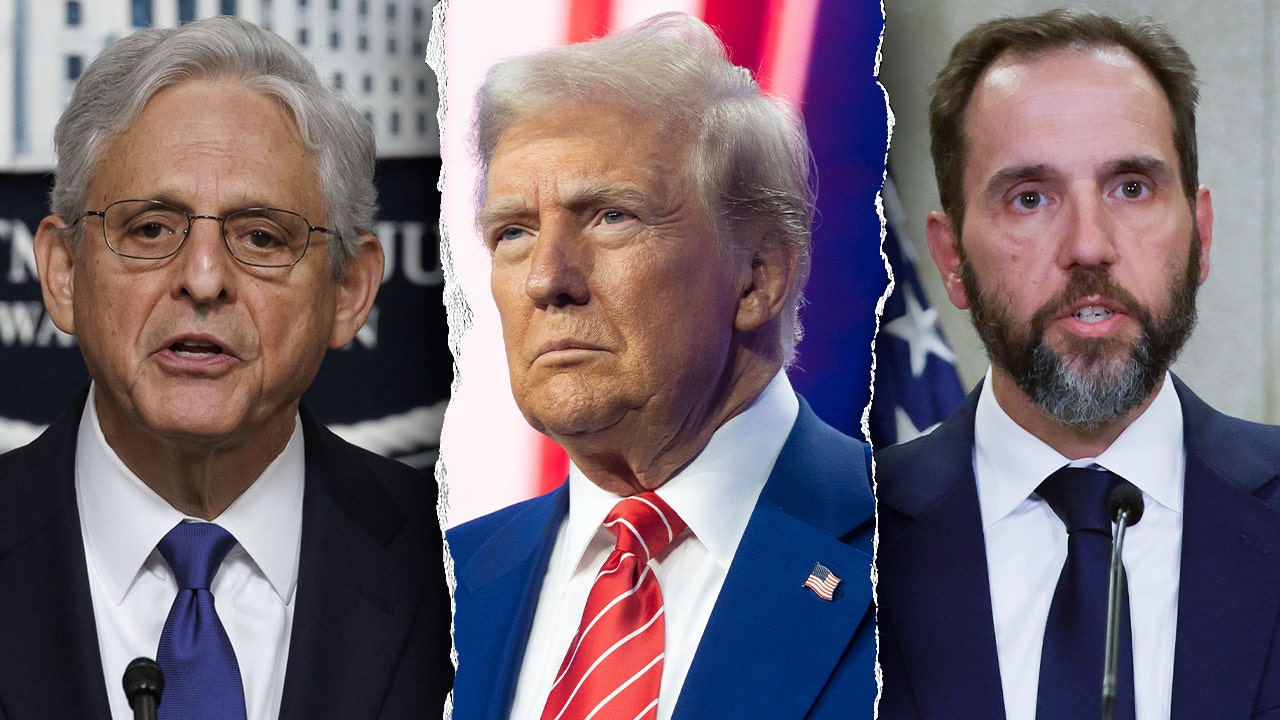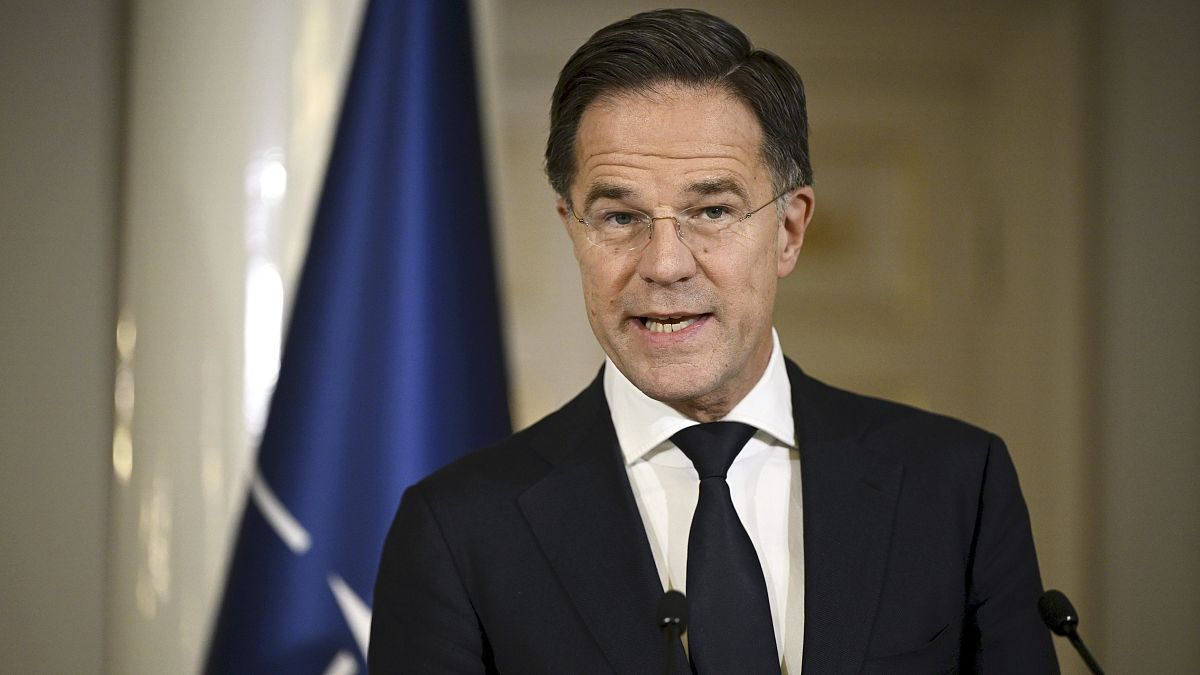Lifestyle
Paradise lost along Pacific Coast Highway
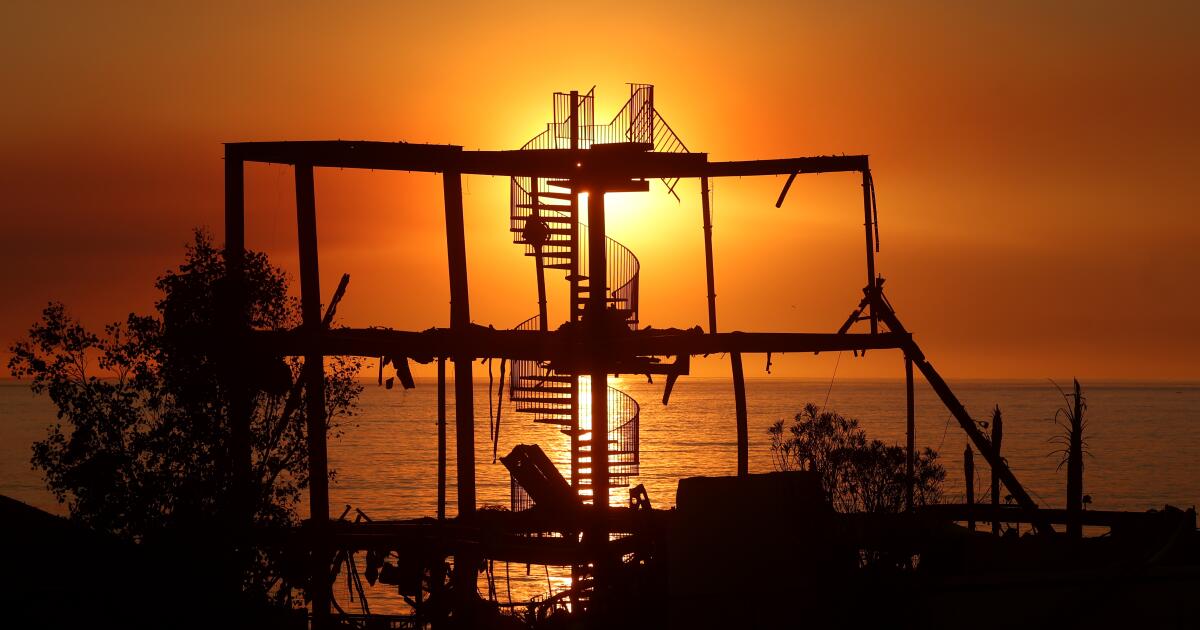
Everyone knows California is disaster-prone, but there’s a familiar logic to the calamitous geography in this high-maintenance beauty of a state.
Wildfires are supposed to be in the hills — in the wild — not on the beach, and certainly not inside the borders of one of the biggest and best-prepared cities on the planet.
The devastation from the Palisades fire extends for miles along Pacific Coast Highway.
(Robert Gauthier / Los Angeles Times)
But the fire that tore through coastal urban Pacific Palisades this week was driven by the kind of unholy wind speeds typically confined to high mountain passes or the crest of the Sierra Nevada. Astonishing gusts of 70 to 80 mph blew all of those preconceived notions away.
“I never thought we’d have to evacuate, because we’re so far away from the mountains,” said Denise Weaver, who lives on a bluff overlooking dozens of burned houses on the Pacific Coast Highway. She struggled to find words to describe the tragedy, and the irony, of friends losing everything to fire on the edge of the world’s largest water source.
“We’re, like, 100 feet from the Pacific Ocean,” Weaver said. “It’s just nuts.”
What amounted to a flaming hurricane erased all of the presumed safety advantages of fighting a fire in a well-equipped city.
The small air force of nearby tanker planes and helicopters was grounded. Powerful streams of water from a veritable traffic jam of firetrucks were snatched by the wind and carried away as mist. And with so much sudden demand on the city’s water system, hydrants quickly ran dry.
At that point, all of the affluence, urbanity and privilege in the world wasn’t much good. Desperate residents might as well have been alone on a remote, flaming mountainside.
“Fires under those conditions are essentially unfightable,” said UCLA climate scientist Daniel Swain. “The best you can hope to do is get people out of the way.”
To understand what made Tuesday so shocking, so confidence-shattering, think of wind like flowing water. In the usual Santa Ana storms, most of that flow streams out of the desert, through mountain passes and into the valleys along predictable pathways, like water coursing down riverbeds.
To the north, the strongest winds flow through the Newhall Pass, in Santa Clarita, and into the San Fernando Valley.
In the center, they flow down along the Santa Ana River — for which these storms are named — past Riverside and Anaheim on the way to the coast.
To the south, the wind comes through the Cajon Pass, between the San Bernardino and San Gabriel Mountains.
But on Tuesday, there was so much wind high in the atmosphere that it all just flooded over the tops of the mountains and came crashing down into the valleys like a massive wave against the shore.
It was “geophysically chaotic”, Swain said. “You didn’t just need to be in those gaps between the mountains to get the strongest winds.”
Then, just like a tidal wave, it went everywhere. In this case, it literally bounced over the Santa Monica Mountains — Swain called it a “hydraulic jump” — and crashed down along the coast of western Los Angeles County, straight into Pacific Palisades.
There have been windstorms like this before, including one in 2011 that caused a lot of wind damage in the San Fernando Valley, Swain said. But, fortunately, they didn’t spark catastrophic fires.
On Tuesday, the city wasn’t so lucky.
By Thursday, neighborhoods still smoldered for miles up and down the Pacific Coast Highway, more than 5,000 homes and businesses scorched. Residents, desperate to see what had become of their homes, argued with cops who had been ordered to keep people out of the evacuation zone.
It was a scene reminiscent of the aftermaths of so many other tragic fires — the Camp fire in Butte County in 2018, the Lahaina fire on Maui in 2023 — but this time the landscape seems oddly familiar, even for people who have never actually been to the Palisades.
That’s because, for anyone who grew up in the Midwest or on the East Coast absorbing images of California served up by shows such as “Baywatch” and films such as “Point Break,” this was the Los Angeles of their dreams.
A slow, sad drive up the coast on Thursday revealed so much of that familiar territory reduced to ashen ruins.
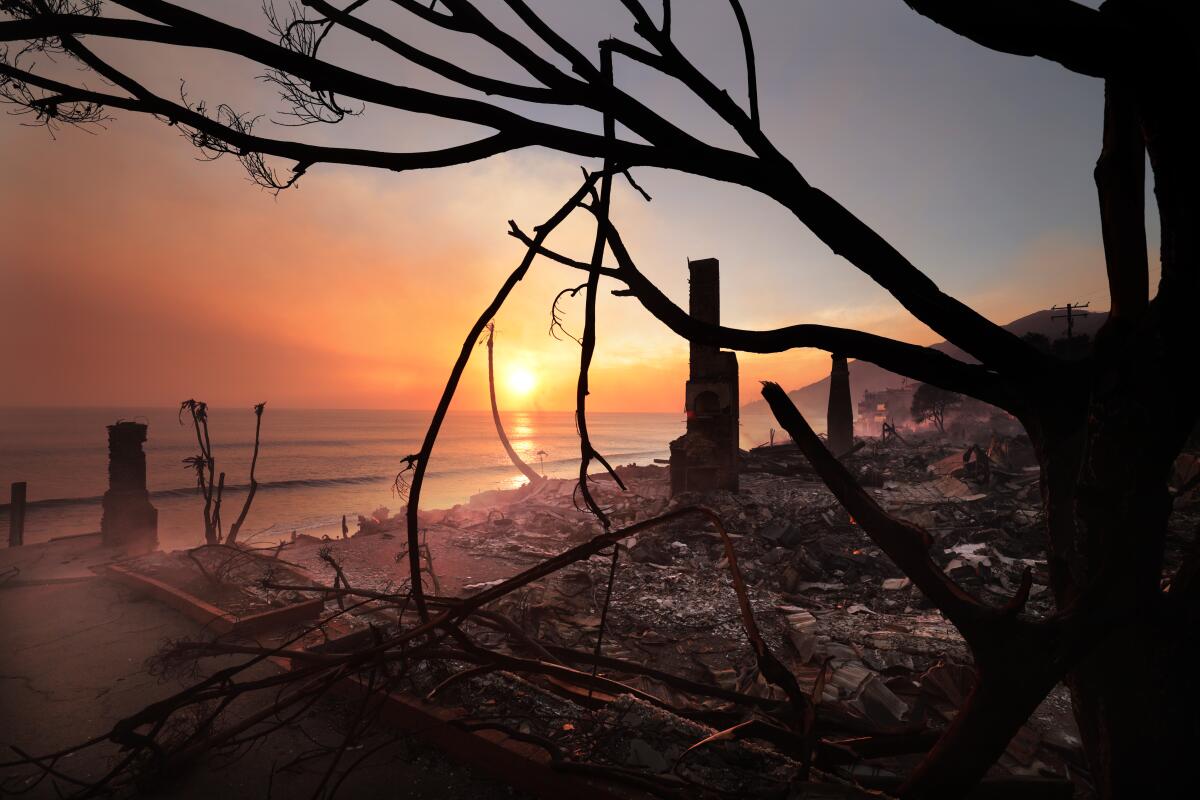
The ruins of beachfront homes smolder along the Pacific Ocean.
(Wally Skalij / Los Angeles Times)
Remember Moonshadows, the restaurant perched over the Pacific where Mel Gibson got drunk in 2006 and launched into a nearly career-ending anti-Jewish tirade when police pulled him over just down the road?
Gone.
So is Gibson’s $14-million house in Malibu, burned while he was in Austin, Texas, doing Joe Rogan’s podcast. “Well, at least I haven’t got any of those pesky plumbing problems anymore,” he quipped to the Hollywood Reporter.
Paris Hilton, Billy Crystal and Jeff Bridges — who played the title role in “The Big Lebowski,” a classic film in which Los Angeles’ Westside is arguably the real star — all lost their homes, too.
And that chubby-cheeked guy all over social media, bathed in an apocalyptic orange haze and pleading with people to leave their keys in their cars when they abandon them so he could move them to let firetrucks through, that was actor Steve Guttenberg from all those “Police Academy” movies in the 1980s.
How L.A. is that?
That “is this real, or a movie” sensation persists, even while you’re sucking in the acrid air and rubbing the ash out of your reddened eyes, as aerial tankers skim water off the ocean and lumber into the sky overhead. It feels like the set of a disaster film.
It gets real again, quickly, when a regular guy comes shuffling down Temescal Canyon Road in a Dodgers hat, N95 mask and dusty surgical scrubs.
Paul Austin, 61, is an orthodontist. He’d left at 6 a.m. Tuesday to go to his office in Simi Valley and straighten a few teeth. While he was gone, his home of 20 years and almost everything in it was “totally, totally destroyed,” he said. He hadn’t changed clothes in three days.
He started the interview joking that the only thing left on his property is a giant Santa in his frontyard, a holdover Christmas decoration that he thought for sure would have blown away.
“I don’t think for any of us, really, it’s even hit home what we’ve lost,” he said, and then he paused, overcome by sudden sobs behind his mask and his goggles.
“Everything.”

Lifestyle
Bid on the bard: Auction features historic items from Bob Dylan's life

Bob Dylan at a press conference in London in 1966.
Express Newspapers/Getty Images
hide caption
toggle caption
Express Newspapers/Getty Images
Bob Dylan’s cultural staying power is proving as potent as ever, with a huge auction featuring historic artifacts from the crooner’s life and career set for Jan. 18.
3 things to know:
- The collection is from the oft-called “godfather” of rock journalism, Al Aronowitz, whose credentials include being the original manager of The Velvet Underground and introducing Dylan to a little unknown indie band called The Beatles back in 1964.
- The auction lot includes more than 50 items and features early handwritten notes on Dylan’s hit, “Mr. Tambourine Man,” as well as photographs, posters and a signed harmonica.
- There’s also some original art from the bard himself, including a painting inspired by the work of Marc Chagall, according to the detail-rich item descriptions (that are worth perusing if you want to know more about this guy’s old stuff.)
Want more? The Pop Culture Happy Hour podcast suggests and dissects the buzziest new movies, TV, music, books, videogames and more, five days a week.
What’s up with Bobby these days?
His Timothée Chalamet-lead biopic A Complete Unknown hit theaters this past Christmas. As NPR’s Pop Culture Happy Hour panel discussed, the film was for some people and a miss for others, and is now the subject of plenty of awards season chatter. (You can hear from the meta-Bob himself, as Chalamet talks to NPR about the challenge of portraying one of the biggest names in American pop culture.)
YouTube
As for the man himself, Dylan headlined the Outlaw Music Festival last year alongside Willie Nelson, and tweets every once in a while to honor a late friend or a good restaurant. There’s no verdict from him on whether he enjoyed the biopic or not.
And if you’re desperate for a piece of Dylan memorabilia but don’t have several thousand dollars to spend on the auction later this week, you can always purchase a handle of his very own branded whiskey.
Get more culture coverage from NPR:
- Listen to the It’s Been a Minute podcast, where host Brittany Luse goes beyond the obvious takes. Because culture doesn’t happen by accident.
- Hear from three people from Dylan’s life all depicted in A Complete Unknown, courtesy of Fresh Air.
Lifestyle
Beyonce Postpones Today's Huge Announcement Due to L.A. Wildfires

Beyonce is putting today’s HUGE announcement on ice as the wildfires continue to cut a path of destruction across Los Angeles.
The iconic singer issued a statement on Instagram Monday night, postponing her big reveal to a later date due to the devastation that has claimed the lives of at least 24 Angelenos with dozens still missing and thousands of homes destroyed.
Waiting for your permission to load the Instagram Media.
Bey wrote that she’s praying for the families who have suffered trauma and loss, hoping they’ll be able to heal and rebuild their lives.
She also gave a shout out to LAFD firefighters who are still battling the blazes in the Palisades and Eaton, among other neighborhoods.
On Sunday, Bey forked over a $2.5 million donation to the L.A. Fire Relief Fund, which she recently launched through her charity, BeyGOOD.
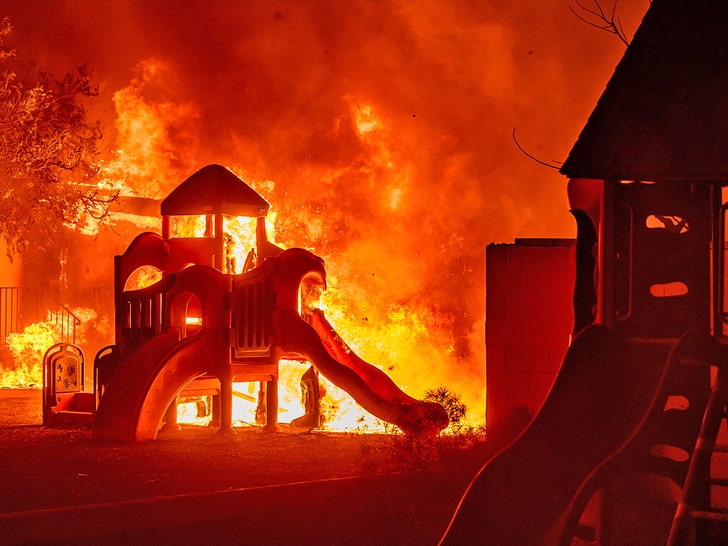
Bey said all contributions would specifically be funneled to families whose homes were lost in the Altadena/Pasadena fires, as well as church and community centers that were also impacted.
Meanwhile, the wildfires have affected one of Beyonce’s closet relatives. Last week, Bey’s mom, Tina Knowles, posted a message to Instagram, saying that her Malibu bungalow had burned to the ground and thanking firefighters for their service.
Lifestyle
Oliviero Toscani, Driving Force Behind Provocative Benetton Ads, Dies at 82

Oliviero Toscani, an Italian photographer who used images of an AIDS patient and death row inmates to break the boundaries of fashion imagery as the creative mastermind of Benetton’s advertising campaigns, died on Monday. He was 82.
His death was announced by his family on Instagram. They did not say where he died or cite a cause of death, but in August Mr. Toscani told the Italian newspaper Corriere della Sera that he had been diagnosed with amyloidosis, a rare and incurable condition in which there is a buildup of protein.
His shock-and-awe campaigns in the 1980s and ’90s helped turn Benetton from a small Italian brand into a global fashion powerhouse, with provocative advertisements that blurred the lines between marketing and activism, high art and consumer industry.
In one ad, an AIDS patient lay on his back, his mouth open, his hands curled on his chest. His dark eyes stared past his family, who had gathered around his deathbed. The patient, David Kirby, looked almost Christ-like.
And there, near the bottom right, a few words hung in a green box: “United Colors of Benetton.”
The advertisement, which ran in the 1990s, was one of the most provocative and divisive in recent fashion history, prompting furious debates over whether Benetton, and Mr. Toscani, were creating art, engaging in advocacy or exploiting the epidemic to sell its clothes.
Notably, Mr. Toscani had the Kirby family’s permission to use a colorized version of the image, which was shot in 1990 by the photographer Therese Frare. The Kirbys said the campaign had helped broaden awareness about AIDS.
“Benetton didn’t use us, or exploit us,” the Kirby family said, maintaining that this was a way for their son’s portrait to be “seen all over the world, and that’s exactly what David wanted.”
Mr. Toscani’s ads were often socially progressive, with images of racially diverse and gay families. They were also meant to shock. He used pictures of horses copulating. He used the bloodstained uniform of a soldier killed in Bosnia-Herzegovina. One ad featured actors dressed as a priest and a nun kissing.
“Advertising agencies make millions by repeating the same old thing,” he told The New York Times in 1995, adding, “We try to go another way.”
Mr. Toscani sometimes crossed the line even for Benetton. He joined the company in 1982 and left in 2000 amid an uproar over an ad campaign that featured photographs of death row inmates across the United States.
He returned as creative director in 2017. But his career at Benetton came to an end in 2020, not because of the calculated and daring risks he had taken in photography and advertising, in which he delighted in his broadside challenges to conventional ideas of respectability. Rather, it was because of an offhand comment he made in a radio interview about a bridge collapse in Italy in which more than 40 people died. “Who cares that a bridge collapsed?” he had said. Though he apologized, Benetton fired him.
Italian politicians and creative leaders honored him in social media tributes on Monday. The designer Valentino Garavani, the creator of Valentino, called him “a visionary who challenged the world through his lens.” The designer Giorgio Armani wrote that “the directness and visual impact of his language set a standard.”
Oliviero Toscani was born in Milan on Feb. 28, 1942. He followed in the footsteps of his father, Fedele Toscani, a photojournalist. Mr. Toscani trained at the Zurich School of Applied Arts and worked as a fashion designer before he joined the Benetton Group as art director in 1982.
His survivors include his wife, Kirsti Moseng Toscani, and their three children, Rocco, Lola and Ali. Mr. Toscani was married twice before and had three other children. Complete information on survivors was not immediately available.
In his final months, Mr. Toscani told the Corriere della Sera that he had lost weight while being treated for amyloidosis and that his sense of taste had declined. Wine tasted different to him, he said. “I am not interested in living like this,” he added.
But in September, he traveled to the Museum fur Gestaltung Zurich for a major retrospective of his work called “Oliviero Toscani: Photography and Provocation.” It closed just over a week before he died.
“I have found out that advertising is the richest and most powerful medium existing today,” he told The Times in 1991. “So I feel responsible to do more than to say, ‘Our sweater is pretty.’”
Elisabetta Povoledo and Matthew Mpoke Bigg contributed reporting.
-

 Politics1 week ago
Politics1 week agoWho Are the Recipients of the Presidential Medal of Freedom?
-

 Health1 week ago
Health1 week agoOzempic ‘microdosing’ is the new weight-loss trend: Should you try it?
-
/cdn.vox-cdn.com/uploads/chorus_asset/file/25822586/STK169_ZUCKERBERG_MAGA_STKS491_CVIRGINIA_A.jpg)
/cdn.vox-cdn.com/uploads/chorus_asset/file/25822586/STK169_ZUCKERBERG_MAGA_STKS491_CVIRGINIA_A.jpg) Technology5 days ago
Technology5 days agoMeta is highlighting a splintering global approach to online speech
-

 Science3 days ago
Science3 days agoMetro will offer free rides in L.A. through Sunday due to fires
-
/cdn.vox-cdn.com/uploads/chorus_asset/file/25821992/videoframe_720397.png)
/cdn.vox-cdn.com/uploads/chorus_asset/file/25821992/videoframe_720397.png) Technology6 days ago
Technology6 days agoLas Vegas police release ChatGPT logs from the suspect in the Cybertruck explosion
-

 Movie Reviews1 week ago
Movie Reviews1 week ago‘How to Make Millions Before Grandma Dies’ Review: Thai Oscar Entry Is a Disarmingly Sentimental Tear-Jerker
-

 Movie Reviews1 week ago
Movie Reviews1 week agoMovie Review: Millennials try to buy-in or opt-out of the “American Meltdown”
-

 Health1 week ago
Health1 week agoMichael J. Fox honored with Presidential Medal of Freedom for Parkinson’s research efforts











